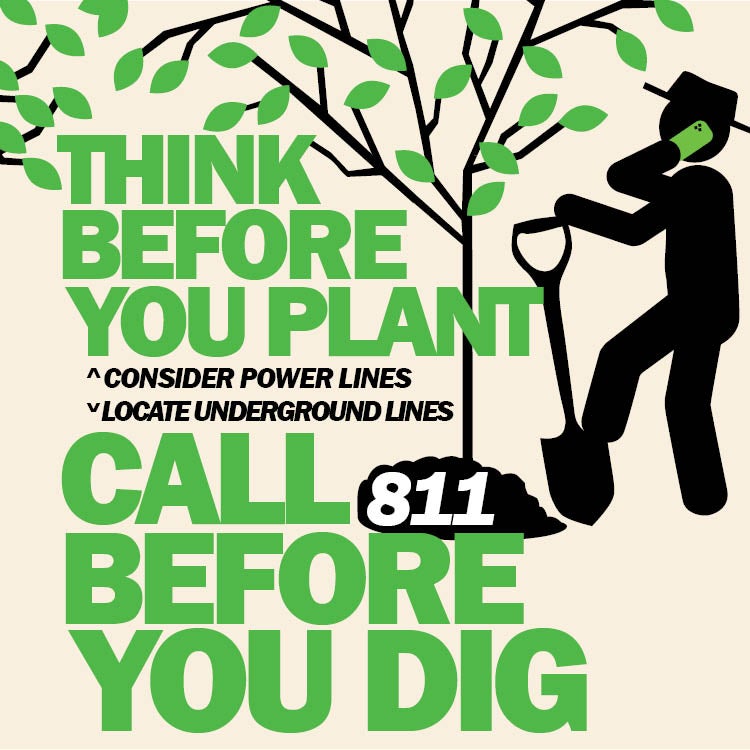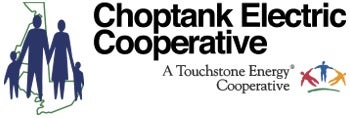Energy-Efficient Landscaping
By Bobby Schaller, Multimedia Manager
Enjoy saving money?
Do you enjoy welcoming spring and all the growth and green the season brings? Did you know that well-designed landscaping could be your best bet for lowering your power bill? In fact, planting the right trees and shrubs in the right locations could be the best long-term home investment for keeping your heating and cooling usage and costs down. Not to mention improving your home’s aesthetics and gaining environmental benefits from planting more life around you.
With an average return on investment within eight years, a well-designed landscape can cut your summer and winter power costs dramatically. It doesn’t matter if you have a large plot or a small yard, there are many ways to increase energy efficiency by utilizing your land. You could plant water-thrifty grass, build a clothesline or install rain barrels. However, the two biggest ways to save on heating and cooling costs are to provide shade in the summer and install windbreaks for your home for the winter.
We live in a temperate climate that closely borders the hot and humid climate of our neighbors to the south. Because of that we experience all four seasons with dry, cold winters and hot, humid summers. The age-old question around here has always been, “How do we stay cooler in the summer and warmer in the winter?”
With summer a few months away, let’s start there. Planting deciduous (leaf-shedding) trees with high crowns (i.e., leaves and branches) to the south of your home will block solar heat in the summer and can reduce the amount of air conditioning that you use dramatically. Also, by shading your air-conditioning unit without restricting its air flow, you will increase its efficiency by 10%. Of course, when fall arrives, deciduous trees lose their leaves, allowing sunlight to warm and light your home on sunny winter days.
To reduce your power cost in the cold winter months, plant evergreen trees and shrubs with low crowns to create windbreaks and block prevailing winter winds. Dense evergreen trees and shrubs planted close together to the north and northwest are the most common type of windbreak and can help lower energy used for home heating. Or, evergreen trees combined with a wall or fence can deflect or lift the wind over the home. For maximum protection, plant your windbreak at a distance of two to five times the mature height of the tree from your home.

Think Before You Plant
Trees have a very long lifespan that enables them to become more functional and beautiful as they grow. But a poor landscape plan could have a negative effect. An improperly placed tree causes nearly 15% of all outages on our system. Ensure proper placement of trees before you plant! When you are looking at planting bushes, shrubs or trees, look up and see if there are any power lines above or near. Some trees could grow up and interfere with power lines, so instead, think of planting shorter bushes or shrubs near those areas
Call 811 Before You Dig
Before you dig, please call 811. It could save your life! By calling 811 before you dig, you are protecting not only your life and those around you, but also protecting your property. Whether you are planting a tree, or installing a fence or finding a new spot for your mailbox, if you are not sure what lies beneath, please call 811. 811 is a free service that marks out underground utility lines, pipes and cables. This way, you aren’t causing damage to any utility lines, which can disrupt service to an entire neighborhood, harm diggers and potentially result in fines and repair costs. 811 will coordinate with local utility and service providers to mark underground lines based on a color code for easy interpretation.
Other Simple and Effective Ways to Become More Energy Efficient
• Replace traditional lightbulbs with LED lightbulbs
• Change air filters regularly
• Have your HVAC system serviced
• Unplug unused appliances when not in use
• Use less. Turn your thermostat up 3 degrees in the summer and down 3 degrees in the winter.
